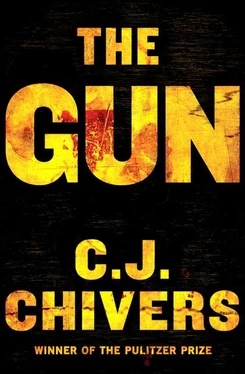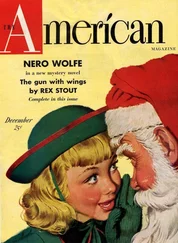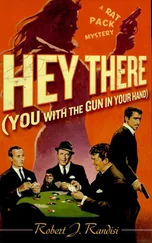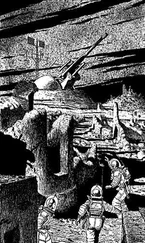Parallel developments had made Gatling’s weapon more reliable. The improvements to the weapon proper in 1865 had been matched by advances in ammunition manufacturing, which made cartridges with solid metal casings available. The new gun, with the new casings, was an altogether more effective system. Gatling in time admitted that perhaps his earlier sales efforts had been rushed. When he had written Lincoln, it seemed, he had been peddling an unreliable weapon. “The machine gun was not of much practical use until the metal cartridge had been perfected,” he said, “and that was not till after the war was ended.” 5
The end of the war also brought an end to an American embargo on exporting arms. The American army was small, and with a large recent order, Gatling knew that there were natural limits to domestic sales. He also knew that the more nations that fielded Gatling guns, the more appealing they might become to others. With the export ban lifted, he searched for business overseas. He enlisted the help of international sales representatives, offering salaries and commissions. Company officers, including Gatling, went abroad. At their urging, trials were held in Holland, Berlin, Versailles, Vienna, and Denmark. Sales started slowly. But the efforts hinted at the new markets’ prospects. In 1867, the company sold the rights to Russia to make guns for its own use, and sold one gun to the Argentine Republic and another to the Royal Bavarian Arsenal. The Dutch bought two more, and the following year, in 1868, the royal Danish government ordered three. Word was spreading of the weapon’s potential, reaching those controlling the purse strings of several governments.
Then came a break. Czar Alexander II of Russia was trying to exert his empire’s influence over distant lands and indigenous populations. He sought arms, the best available, and in 1865 the czarist bureaucracy in Saint Petersburg assigned Colonel Alexander Pavlovich Gorloff to be the empire’s military attaché in England and the United States. Colonel Gorloff, an arms-design expert from the Russian artillery, was directed to canvass arms and ordnance circles in the West and see what might be procured. Russia has long produced able military agents, and Colonel Gorloff, given wide latitude by his country, was one for his time. He had refined manners, spoke exquisite English, and had experience as the former secretary of the nation’s Artillery Commission, where he had helped design Russian cannon. Upon arriving in the United States, he found himself drawn in particular to two systems: Smith & Wesson revolvers and Gatling guns. He introduced himself to American companies and comprehended the potential of repeating weapons with remarkable speed. By 1867 he convinced the czarist government to enter an agreement with the Gatling Gun Company to allow the Russian government to manufacture Gatlings. 6In May 1869, Colonel Gorloff submitted an order to have seventy guns made in the United States; within months he ordered thirty more. Russia was moving quickly. While the prevailing attitude among officers of almost all professional armies was to dismiss machine guns as nearly useless, the czarist military distributed them without an agonizing or time-consuming debate. Within a year, every Russian artillery brigade would field a battery of eight Gatlings made for Russian-caliber cartridges. 7
Russia’s officers seemed much more determined to use Gatling guns than the inventor’s own countrymen. Even after General Dyer and other ordnance officers recorded the Gatling’s curious new powers and placed orders, the United States Army could not figure out what to do with them, aside from the obvious use in guarding forts and other fixed points. Some officers shunned them. “Against my wishes I was detailed to command them,” wrote Edward S. Godfrey, a recent graduate of West Point assigned to the Seventh Cavalry in Kansas in 1867 and ordered to oversee “four Gatlings hauled by two mules each.” He knew next to nothing about them, and had trouble finding soldiers to man them; this detail, like many others, apparently had been neglected since the guns had been delivered to Seventh Cavalry’s post. “The only Gatlings I had ever seen were in the ordnance museum at West Point,” Godfrey groused. 8
The Russian purchases were made before Gatling himself knew just how powerful and well made his weapon had become. A test in Vienna, on July 9, 1869, showed the new weapon’s ferocious capabilities. At a distance of eight hundred paces, a Gatling crew took three trial shots and then opened fire with a Gatling gun of half-inch caliber. The target, fifty-four feet wide by nine feet high, simulated the sort of large enemy presence—a formation of soldiers, perhaps, or a boat or an artillery piece—that gunners would fire upon by traversing their weapon slightly and distributing fire for maximum effect. The crew took 216 shots. Two hundred and thirteen bullets struck home. At twelve hundred paces, a larger Gatling gun fired 191 shots for 152 hits. 9The results should have led to a self-evident conclusion: This was a weapon that could cut down the massed formations—the columns, lines, and squares of tightly grouped infantrymen—common in that day.
The following month, another test, at Karlsruhe, Prussia, pitted one hundred well-drilled infantry soldiers equipped with the zundnadelgewehr, a breech-loading rifle known as the “needle gun,” against a single half-inch-caliber Gatling. This time the target was seventy-two feet across but only six feet high. The competitors were given a minute each to fire as accurately and often as they could manage from a position eight hundred paces away. The one hundred Prussian riflemen produced a rolling barrage displaying the effects of what until that time had been seen as rapid firing: 721 shots, roughly one aimed shot per man every nine seconds. An examination of the target showed that much of the shooting had, in effect, been little more than noise. Only 196 projectiles struck the target, a success rate of 27 percent. The Gatling gun fired 246 shots and recorded 216 hits, or nearly 88 percent. 10Gatling’s gun had almost achieved its creator’s vision: Two men, not one, had done the work of one hundred men and with only about one-third the ammunition. The first part of Gatling’s theory about efficiency was proving correct. Technology was rendering the conventional infantry tactics of the era obsolete, although the conventional infantry did not yet know it.
More orders arrived. In 1870, a sales agent traveling the Middle East reported that he had in hand an order from Egypt for twenty-four guns. The company’s hired agency in Europe had paid off, too. In the late spring, the agent, L. W. Broadwell, traveled to Constantinople and arranged demonstrations for Halil Pasha, the grand master of artillery for the Ottoman Empire. With a new drum feed, he wrote, the .42-caliber Gatling “has never before worked so well—no more hitches of any kind.” He negotiated a contract to sell two hundred Gatling guns, to be manufactured under contract in Vienna, to the Turkish forces, 11whose artillery experts had moved more quickly than even Colonel Gorloff.
With several hundred Gatlings working their way into service in armies at Europe’s edges, the Europeans were busy with their own experiments with rapid rifle fire. Though they still favored the volley-gun design, they were developing guns that reduced the time between volleys and fired at rates comparing favorably with Gatling’s claims. The most successful result had been credited to a Belgian army captain in 1851, and was modified by Joseph Montigny, a Belgian engineer, who designed a cylinder holding thirty-seven fixed barrels, which were fired in an almost simultaneous sequence by a single clockwise turn of a crank. Montigny’s offering was a completely different concept from Gatling’s, and owed more to the volley guns, like the failed Vandenburgh, than to guns in American service. The French called the gun the mitrailleuse, or grapeshooter, a name that suggested its officers conceived of it as a new kind of artillery more than as an infantry arm. Reloading was achieved by removing a rear plate that had holes arranged to match the barrels. A soldier would insert a preloaded replacement plate into the grooves and close the breech. The mitrailleuse was ready for its next blast. Volley firing was thereby straightforward. A gunner would give the crank one swift turn, and bullets would fly. A fresh platter of bullets would be rushed into place, and the crank would be spun anew. Montigny claimed a trained crew, well supplied with ammunition, could repeat the cycle as often as twelve times in a minute, for 444 shots in all, discharged in volleys spaced only a few seconds apart. 12His tests, like those of the Gatling gun in Vienna and Karlsruhe, pointed to the lethal consequences for any massed infantry formation caught in the path of rifle bullets concentrated by a machine. At eight hundred yards, a cluster of thirty-seven bullets fired from a Montigny remained in a grouping roughly ten feet high by twelve feet wide. On paper, these were fearsome statistics. In the late 1860s, while Gatling was busily trying to sell France his improved weapons and personally attending field tests of his weapon in Versailles, 13Montigny convinced Napoleon III, the French emperor, to order that the mitrailleuse be distributed to French troops.
Читать дальше











